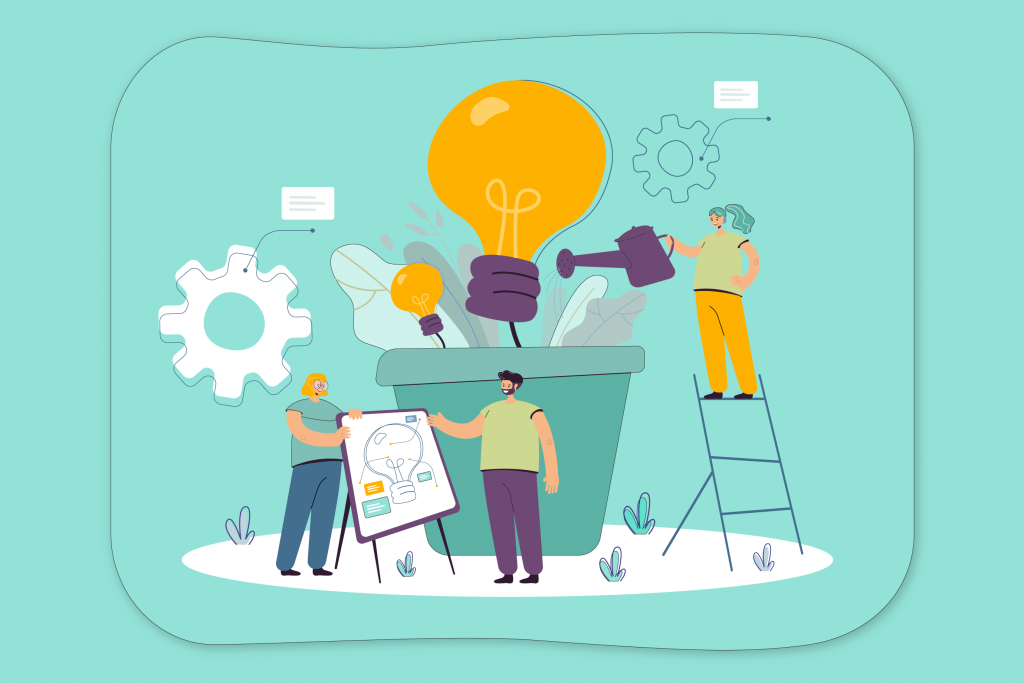Creativity can be learned
March 29, 2021
Elena Venieri


Have you ever been faced with a blank sheet of paper and not known what to write, or faced with a problem but not found a solution, or faced with a gift but had no ideas? So many people find themselves in these situations every day and conclude by saying that they are not creative.
At the same time, I have met many times people who tell me how lucky I am to be so creative… “such a beautiful gift!
What if I told you that creativity can be learned? Or rather that creativity can be rediscovered? Yes, because everyone, almost everyone, is born creative.
The theory comes from a research study commissioned by NASA in 1992. Dr George Land and Dr Beth Jarman developed a test to identify the capacity for divergent and creative thinking. The results are surprising: 98% of children aged 4-5 were creative, but only 30% were creative by the end of primary school and only 12% by the end of secondary school. They also conducted the same test on a group of adults and less than 2% passed the test. Less than 2%.
Partly this could be due, as Ken Robinson says, to the school system which is designed to train individuals who are well adapted to the industrial world, who can follow the rules and goals set for them. Incredible when you think that creativity is one of the most required skills of the 21st century. It’s no coincidence that lateral thinking quizzes are one of the workhorses of interviews at the world’s biggest digital companies: Google, Facebook, Airbnb, Apple…
Dr Fredricka Reisman, professor and founding director of the Creativity and Innovation programme at Drexel, explained that ‘everyone is inherently creative’. The good news is that creativity can be improved and there are several techniques to practice it.
1. Don’t take anything for granted

Often, when we have to solve difficult problems, we take aspects of the problem for granted, but in fact, they are not obvious at all. Let’s do a riddle.
It’s a stormy night, you’re driving in your car, and as you pass by the bus stop you notice three people waiting: an old lady who looks like she’s about to die, an old friend who saved your life on one occasion, the perfect partner you’ve always dreamed of. Knowing that you can only fit one passenger in your car, who do you choose?
Everyone pauses to try to figure out which of the 3 characters has priority because our brain has assumed that only one will be able to get into the car. It does this naturally to simplify our lives, looking for shortcuts that allow us to find a solution without wasting too much energy. But the hypothesis he made took us away from the solution.
One solution to overcome this cognitive bias is to create a list of everything we are taking for granted. This will allow us to find the solution which is obviously the old lady! After helping her into the car, you can give the keys to your friend and wait for the bus with your soulmate.
2. Start from the end

This is a very good lateral thinking strategy. Try to start at the bottom and focus on what we want to achieve, then try to imagine what the immediately preceding step is and work backwards to the current solution.
3. Make a… absurd list

If we find ourselves stuck for a solution, we try to make a list of absurd ideas. The important thing is that the list is really long because at the beginning the ideas will inevitably be quite banal. As we continue with the exercise, more creative ideas will come up.
4. Reframe the question

Often it is a question of seeing the problem from another angle. So take the question and break it down into elements, remove some, reorder them, add new ones.
5. Six-hat technique

This technique involves looking at the problem from six different angles. In this way, we will be able to generate more ideas than if we only had one perspective.
- Yellow (optimism and positivity): look for benefits, gains and concrete proposals with a logical basis for them. Develops positive and constructive thinking.
- Green (creativity): creates new ideas, uses imagination and provocation to break the mould, create new solutions, innovate.
- Blue (control): He is the conductor of the orchestra, sets the topic, takes care of the focus, summarises, makes conclusions. He is the moderator, smoothing out disputes and moderating interventions.
- Red (emotions): gives free rein to emotions, intuitions, positive and negative feelings. He does not justify himself or seek a logical basis for his thoughts, any expression is permissible.
- White (objective facts): impartial, objective, ask specific and precise questions and reports data and facts without personal opinions.
- Black (negativity): reveals what cannot work, gaps, risks, procedural errors. Not the pessimist, but the devil’s advocate.
6. Brainstorming

This is perhaps the best-known technique and the key elements are:
suspending all judgement about one’s own and others’ ideas
stimulating each other’s ideas, so that everyone can build on each other’s ideas and move the problem in every direction.
7. Analogy technique

The technique is very simple, it involves translating a process or concept into a different context. For example, the Ikea model transferred to the kitchen, becomes the kitchen kit, with recipes and raw materials ready to create the recipe. Or the concept of the babysitter, applied to dogs, becomes the dogsitter…